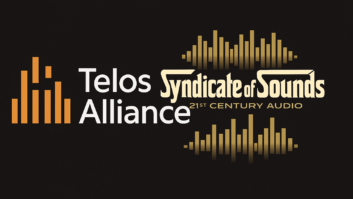Update: The FCC on Wednesday announced it will accept public comments on this NAB proposal through May 2. File comments in the FCC’s online system; in the Proceedings field, enter either 15-94 or 22-329.
The National Association of Broadcasters is urging the FCC to act quickly to allow broadcasters and other Emergency Alert System participants to use software-based EAS technology.
NAB first proposed a software EAS option in 2022 as part of a proceeding on cybersecurity of EAS and Wireless Emergency Alerts. It says numerous broadcasters have expressed support for its proposal since then.
But in a new petition it asks the commission to expedite the matter, in part because of concerns over sustainability of the legacy hardware EAS ecosystem. The issue has taken on urgency because Sage Alerting Systems, one of two remaining EAS device vendors, recently decided to cease production of its hardware, partly due to supply chain concerns.
“Sage’s exit is a clear indicator that the current legacy ecosystem is not sustainable and that the commission needs to permit more modern approaches to support a long-term, robust emergency alerting system,” NAB told the commission.
It said there are many legacy devices by various manufacturers in the market. “Many EAS participants, especially radio stations, will face significant challenges when they need to replace or upgrade an EAS device.”
By contrast, it said, EAS software would be able to operate on multiple existing hardware appliances or software processes already in use within broadcasting.
PPM migration as a model
At present, EAS encoding and decoding must be done by physical devices. NAB envisions an ecosystem where EAS is “freed from this physical requirement and can instead, at a broadcaster’s discretion, reside elsewhere within a broadcaster’s plant, running on trusted and certified hardware platforms.” It says reliability and security will be improved without compromising effectiveness.
The approach contemplates autonomous software-based EAS functions located at the edge of a broadcaster’s operation, similar to other resilient, secure software systems used in modern broadcast frameworks.
As a recent example, it cited the use of Nielsen software that can be embedded into broadcast hardware for Portable People Meter encoding. NAB envisions a similar industry development cycle that would include testing and certification of an integrated software solution for EAS.
“Like today’s legacy hardware EAS devices, a software-based mechanism at the broadcaster’s edge would not be directly exposed to the internet and would still operate if internet connectivity is disrupted,” NAB wrote.
It developed its proposal with advice from chief technology officers and senior engineers from commercial and noncommercial broadcast organizations.
The NAB also acknowledged that technology provider Digital Alert Systems has proposed a “hybrid virtual” approach using currently deployable architecture intended to simplify “issues for broadcasters in terms of cost, complexity and FCC compliance,” the NAB wrote. But the association said that while its proposal aligns in some ways with that of DAS, it has concerns about it.
“Like DAS’s approach, our proposal would allow broadcasters to insert EAS processing in the modern AV-over-IP air chain, simplify reception and playback of EAS messages, and allow autonomous EAS processing at either the local studio or the local transmission site,” NAB wrote.
“However, DAS’s approach still involves a dedicated hardware EAS device, while NAB’s proposal aims to provide stations the flexibility not to rely on a physical legacy device, and certainly not on a particular brand of device.”
The NAB says its software proposal could be implemented through a “fairly minor, global update” to certain definitions in the commission’s Part 11 rules.







